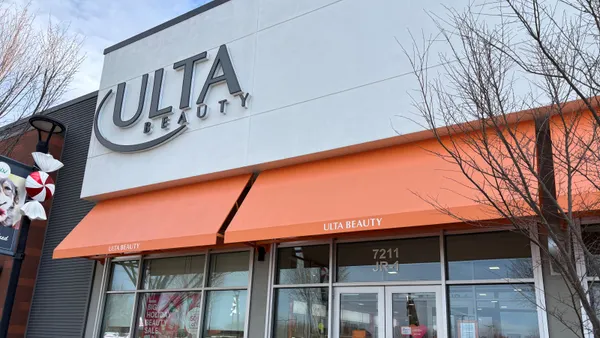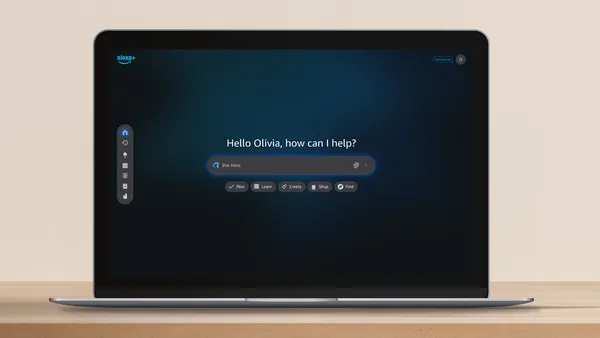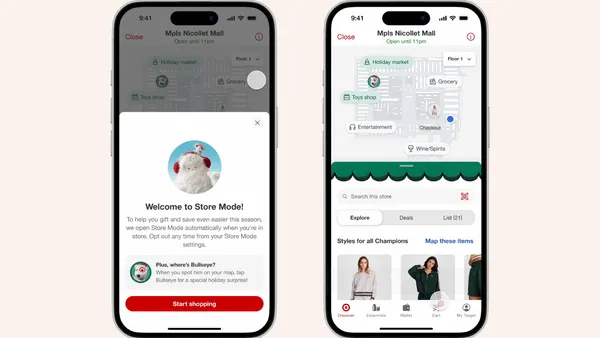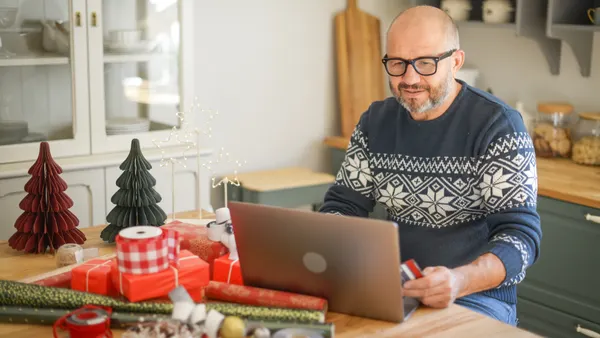Dive Brief:
-
Williams-Sonoma has announced its first augmented reality app, along with 3D room design and product visualization tools developed for the Pottery Barn and PBteen brands. The tools are powered by Google’s Tango technology, according to a company press release emailed to Retail Dive.
-
“3D Room View” by Pottery Barn, the first in a line of new products and site enhancements to roll out over the next year, leverages Tango sensors and computer vision software that enables augmented reality experiences via smartphone. In addition to this app, the first 3D design and visualization tools include “Design Your Perfect Desk” for PBteen and “360 Spin” for Pottery Barn.
-
Pottery Barn customers will have access to 3D Room View via Tango-enabled smartphones, such as Lenovo’s Phab 2 Pro and Asus Zenphone AR starting this month. 3D Room View will launch with a focus on the living room and will add additional spaces over the course of the year. Customers will also have access to 3D Room View with the help and expertise of in-store design specialists at select Pottery Barn stores in the San Francisco Bay Area, with plans to roll out across the country.
Dive Insight:
Pottery Barn isn't the first retailer in the home decor market to offer augmented reality and 3D capabilities. Wayfair has allowed customers to play around with these capabilities in applications similar to those that Williams-Sonoma just unveiled for Pottery Barn. Wayfair also has created its own 3D model library, complete with APIs for developers.
2016 proved to be something of a breakthrough year for use of augmented reality, 3D and related tools by retailers for marketing purposes. In a variety of markets, retailers put these tools in the hands of customers in the name of strengthening customer engagement. In beauty, Sephora has been notably aggressive adding capabilities to its Virtual Artist application. In home improvement, Lowe's has been gradually evolving its HoloRoom project. In fashion, Gap recently announced it's testing a virtual dressing room application that allows customers to try on clothes.
The Gap app actually brings us full circle back to Pottery Barn because both have been developed with Google Tango smartphones in mind. The relationships with a couple of major retailer brands should prove significant for Google's broader hopes to partner with retailers on technology projects.
However, retailers that choose to work with Google's Tango augmented reality technology and Tango-enabled smartphones now must do so with the understanding that this technology is still in its infancy. The Tango devices have gotten good reviews, There are only two smartphones that support it, and those smartphones just don't have much market penetration yet.
Still, given the number of retailers already testing and using augmented reality, 3D and related technologies, it's probably good timing for the Pottery Barn brands to start making it available. It sounds like Pottery Barn has at least a year-long rollout plan involving other apps, features and functions, which is arguably a more concrete commitment to the technology than other retailers have now, or at least have announced up to this point. By the end of this year, it's going to be very interesting to see how these early tests and offerings have progressed, and which retail brands are leading the way.










